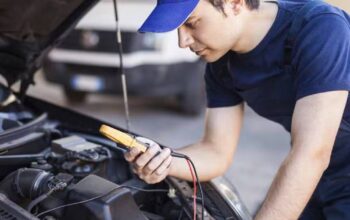Short circuits occur when electrical current bypasses the intended path, often by directly connecting the positive wire to ground or another conductor. In fog light wiring, this can lead to blown fuses, flickering lights, or complete outages. Short circuits are dangerous because they can cause overheating, damage to wiring insulation, and even electrical fires. Because fog light wiring runs through tight spaces and near moving parts, wear and tear or improper installations can create these faults. Automotive repair shops specialize in diagnosing and resolving short circuits to restore safe and reliable fog light operation.
Diagnostic Procedures for Detecting Shorts
When a vehicle arrives with fog light issues, mechanics begin with a detailed diagnostic process to locate the short circuit. The first step usually involves checking fuses and relays related to the fog light system to identify blown components. Next, technicians use a digital multimeter to measure resistance and continuity along the wiring harness. They may also employ specialized tools such as circuit testers and thermal cameras to detect hot spots caused by excessive current flow. Visual inspections help identify damaged insulation, exposed wires, or corrosion. This combination of tests narrows down the exact location of the short circuit.
Repairing the Wiring and Components
Once the short circuit is pinpointed, repair shops take care to safely remove the damaged section of wiring. This often means cutting out frayed or burnt wire and replacing it with new, manufacturer-grade wiring and connectors. Technicians ensure that repairs maintain factory standards, using proper gauges of wire and high-quality insulation materials to prevent future shorts. In some cases, they may also replace related components like switches, relays, or fog light bulbs if they were damaged by the short. Repairs by Auto Repair in Amelia, OH based services are meticulously done to restore the integrity of the fog light circuit and prevent recurrence.
Testing and Verifying the Repair
After repairs, thorough testing is essential to confirm that the short circuit has been fully resolved. Mechanics retest continuity and resistance values across the repaired wiring to ensure no further faults remain. The fog light system is powered on and observed for stable, flicker-free operation. Diagnostic scan tools may be used to clear error codes and verify that the vehicle’s electrical control modules register no faults related to the fog lights. This final step guarantees that the lighting system functions safely and reliably before the vehicle leaves the shop.
Preventive Measures and Maintenance Advice
Professional repair shops also provide recommendations to help vehicle owners avoid future short circuits. This includes regular inspections of fog light wiring for signs of wear, keeping connectors clean and dry, and avoiding aftermarket modifications that may compromise wiring integrity. Technicians may advise protective routing of wires away from sharp edges or moving parts and using dielectric grease on connectors to prevent corrosion.
Conclusion
Short circuits in fog light wiring can cause frustrating and hazardous lighting failures. Professional automotive shops use advanced diagnostics and expert repair techniques to locate and fix these issues safely. Their meticulous approach not only restores fog light functionality but also helps prevent future electrical problems, ensuring drivers enjoy consistent visibility and safety in all weather conditions.







